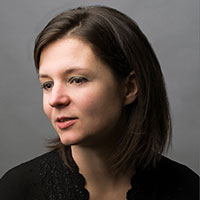The Telephone Exchange Building (1940-1981) Technology, ‘Official Architecture’ and the State
The history of the telephone exchange building and the relationships between architecture, technology and the state have not been thoroughly investigated. Working in collaboration with BT Archives and Historic England, this NWCDTP / AHRC funded research project presents a unique opportunity to combine disparate archival, visual and technical pieces of information to create an overview of the evolution of the building type and the forces behind its inception, procurement, construction, use and decommission, to bring new insights into the mechanics of the state and its agents.
This project aims to establish the developing relationships between architecture, technology and the state over the course of forty years. During this time, the telephone exchange building type evolved from a civic edifice to a more discrete and efficient type of building, driven by cost savings and standardisation with some allowance for regional variations.
This project also aims to map the key actors involved at in the commissioning, design and construction of the telephone exchange buildings to form an understanding of the governing structures that enabled their development. Linking disparate bits of information may reveal individual biographies of key actors previously obscured behind state organisations.
To achieve the above aims, and to inform new ways of thinking about twentieth century infrastructural architecture, this project seeks to develop a transferrable methodological approach which goes beyond functional and stylistic qualities. Such a methodology can bring new insights into the mechanics of the state and its agents and can be applied in the interrogation of other public building typologies with similarly obscured histories.
Biography
Lisa is an ARB-registered architect and urban designer with a passion for creating, shaping and realising visions at both small and large scales. She has experience in masterplanning, commercial and residential design as well as specialist experience in drama and TV studios. Lisa previously headed up Farrells’ Manchester office, where she had a leading role in the strategic development of the Northern Gateway Masterplan.
Lisa completed a Masters in Architecture and Urbanism followed by a Masters in Architecture at the Manchester School of Architecture in 2013, where she now tutors as a part-time Associate Lecturer in the Infrastructure Space atelier.




